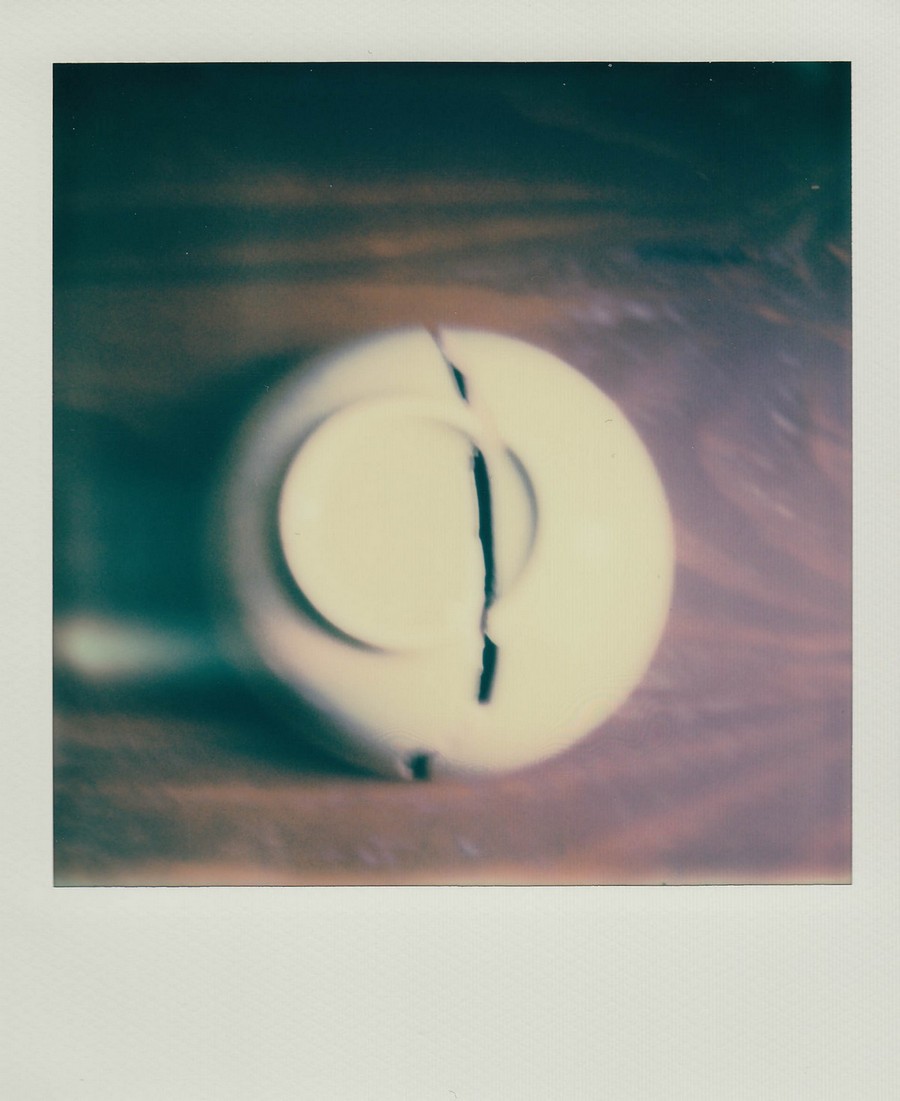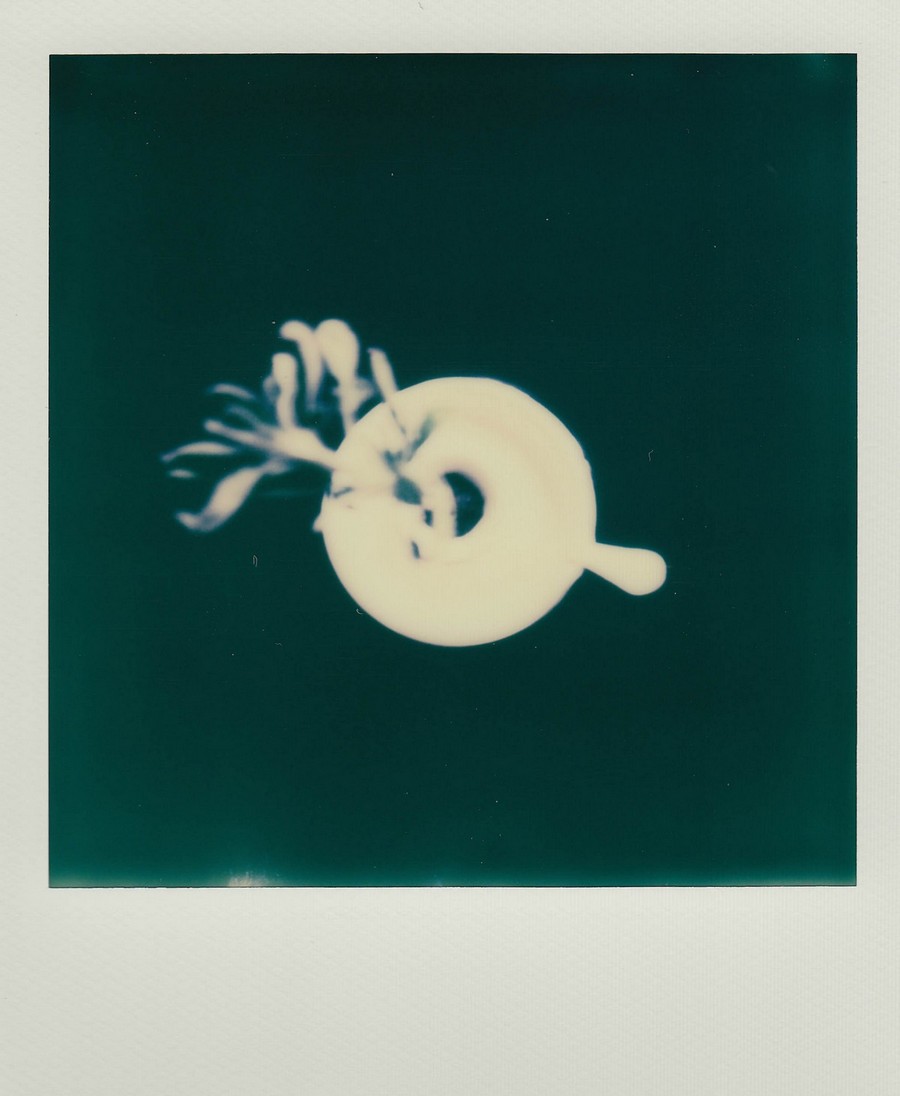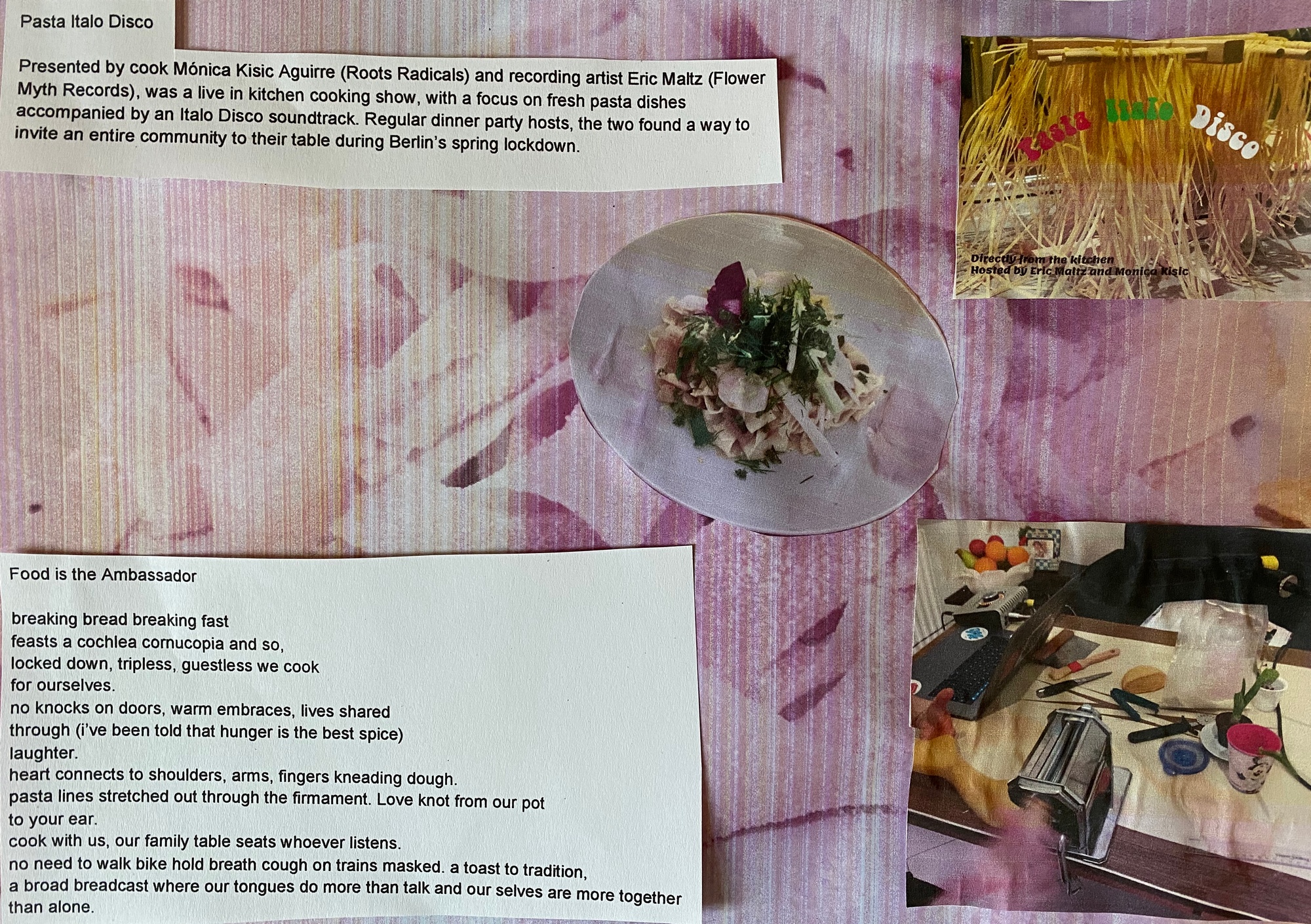Signalling Distance: Community Radio Practice Now
By Katharina Schmidt
Curated by Katharina Schmidt
Abstract
Cashmere Radio is a not-for-profit community radio station based in Lichtenberg, Berlin. The ambition of the station is to preserve and further radio and broadcasting practices by playing with the plasticity and malleability of the medium. This is the community’s collective diary, a conversation of diverse situated knowledges and experiences of negotiating extraordinary circumstances in physical isolation while continuing work within a community of broadcasters. We have asked community members to share (anonymously, if they so wish) how their practice has changed technically, conceptually, or psychologically over the past several months. These responses have been given in a variety of media and have been interwoven in this audio paper. In itself, this publication reflects the values of community, diversity, and experimentation that underpin the work of Cashmere Radio.
Keywords: community radio, broadcasting, radio, multimedia
Biography
Cashmere Radio is a not-for-profit community radio station based in Lichtenberg, Berlin. The ambition of the station is to preserve and further radio and broadcasting practices by playing with the plasticity and malleability of the medium. We do this by both honouring and challenging it’s inherent qualities: it is both a physical station open to the public and an online radio; it has regular shows, yet opens itself up to extended and one-off events; it features extended generative music performances and installations at the same time as working within radio’s typical durations. In short, it is an attempt to enhance and celebrate the performative, social and informative power of radio that we believe lies within the form itself. website
\ \

All illustrations are Polaroids from the series Inner Circle (2020) by Stefan Lingg, unless otherwise noted.
\ \
Introduction
In March 2020, Cashmere Radio made the decision to close the radio studio to the public and broadcast from home in light of the COVID-19 crisis. This effected a further fragmentation of the real and imagined, physical and virtual spaces of broadcasting, as well as a further diversification of radio-making practices. New formats emerged, existing ones morphed, experimentation and collaboration took on new forms of legitimacy and urgency. The challenges and opportunities Cashmere has faced in the past months may be seen as emblematic of the experience of many independent radio stations, while they have simultaneously emphasized the dynamic and deeply personal nature of community radio practice.
These are seven documents of how members of the Cashmere Radio community responded to the challenges of the past year, creatively and intellectually. Together, these contributions represent a wide range of practices and medialities, inviting the reader to explore this collective diary in ways which may be non-linear, discontinuous, and multi-modal.
\ \

Community Radio Practice Now: Seven Miniatures
Inner Circle by Stefan Lingg
This series of Polaroid photographs was taken in Berlin in December 2020 with a SX-70 camera focusing on spontaneous shots of static motives, in this case: circles that can be found in the framework of home. It was sparked by a lack of chance encounters and — as with the label and radio show Stefan is co-curating under the name Pattern Dissection on Cashmere Radio — improvisation is as pivotal as patience. It’s only time. It will pass.
You can find more of Stefan’s photographic work here.
Montes Claros 34 by Laura Gonzalez and Nestor Felipe
Laura and Néstor Felipe are office workers by profession. Their natural habitat is the fascinating world of utensils for stapling, drilling, crushing, cutting, pasting, sealing, photocopying, and archiving paper. Periodically, specifically every four Thursdays, they leave their bureaucratic cubicle. The route they have to take leads directly to the microphones of Cashmere Radio, where they present Montes Claros 34.
To reflect on their experience of making radio during the Coronavirus pandemic, Laura Gonzalez and Nestor Felipe have produced a fictional interview with Interference Journal on Soundcloud.
\ \

\ \
Flux in a Box by Katharina Schmidt
Flux in a Box was premiered in 2020 on Cashmere Radio’s Chronopolis. Chronopolis presents generative and algorithmic music and sound, exploring fleeting, fragile time unique to the radio listening experience.
Time yawns before and drags behind me. It hangs in the air, as indifferent to the hour as a river is to its name [Brodeur 2020].
With plans cancelled and schedules disrupted, the face of Time has changed in 2020. Along with it, our awareness and perception of its passage has been transformed: Time is not as linear and logical as calendars would suggest, it is not the clean clicking of wheels and cogs in a clockwork. Rather, it is malleable and gooey, untidy and unpredictable, it rushes and congeals at will. Now, in December 2020, it seems like no time has elapsed since last March — and aeons have passed.
Different styles and forms of music have been found to go with this paradoxical temporality: From long-form ambient music, over the seemingly endless repetitions of minimalism, to the grand sonic canvases of Morton Feldman — music that shifts the listener’s attention from form to scale, from narrative to deep listening. Moreover, generative music uniquely speaks to a time when actualizing the moment is the only possible plan.
[In] the vibration of time itself in the stroke of a present […] rhythm separates the succession of the linearity of the sequence or length of time: it bends time to give it to time itself, and it is in this way that it folds and unfolds a “self” [Nancy 2002, 17].
Sample on Soundcloud.
\ \

\ \
Reflections by Giacomo Gianetta
The last year at Cashmere Radio was an interesting one since we had to shift our concept a little bit. Historically, most of our shows have been produced live at our studio, which is also a Vereinsraum — the space of the cultural association that Cashmere legally is. Being together in this space has always facilitated a great amount of exchange between different people with different interests, from different generations and backgrounds, etc.
The first step was to create a series of tutorials and guidelines and to put together a group of tutors from the community to help broadcasters stream their shows, pre-record them or stream live from home. We are very proud that from day one of lockdown, we were ready. We didn’t skip anything: Most of the shows stayed the same, though some developed further. At the beginning of the COVID crisis we also incorporated a video stream on our website, the GOATCAST, as a way to stimulate the eye as well as the ear. After the first months of the pandemic, however, a lot of people started video streaming so that “market” became quite saturated. Also, at the end of the day, we are a radio station, so we decided to concentrate on that more than anything.
I think a lot of formats developed quite interestingly, we had Montes Claros playing games in our chatroom while being live on radio, more phone calls, live cooking shows sharing recipes with the community; and more interactions between the audience and the broadcasters. It was a good change as it made the community more mature: It made everybody more independent and also more conscious of the complexities behind the structure we work with. I saw a lot of engagement from the community and our listeners and of course we also gained a larger audience.
But we also miss the old Cashmere and we hope to be able to start again with this new energy and to discover what it means to come back to what used to be normal, our routine. I think we will be able to understand and appreciate the value of it more. I hope that this past year was a good moment to reflect — how we spend our time, what we do in our time, how we keep each other company, how we can tell a story.
\ \

\ \
INFO Unltd by Reece Cox
In this monthly series Reece Cox invites artists, curators, writers (and sometimes musicians) working with sound to share their work and discuss their practice in an ongoing attempt to understand and familiarize ourselves with what it is with the field of contemporary art.
In this short sound piece, Reece Cox reflects on how his relationship towards producing radio has been affected by the Coronavirus pandemic and how opportunities, such as collaborations with DAAD and Nottingham Contemporary, have presented themselves within a wider context of radio gaining listeners and relevance during 2020.
Listen on Soundcloud.
Pasta Italo Disco by Mónica Kisic Aguirre and Eric Maltz
\ \

Collage submitted for this project by Mónica Kisic Aguirre and Eric Maltz, documenting and reflecting on their lockdown cooking show on Cashmere Radio.
\ \
Return of the radio star? by Matteo Spanò
On paper, 2020 could have been a unique year for media practice, and in particular radio practice. We found ourselves in the situation of having to rely more than ever on our mediated bodies and interactions, as the world of first-person, direct contact suddenly went out of order. With this situation came the potential of renewed relevance for a medium, which has prevailed beyond its heyday as a mass medium, which has been based on the premise of transmission across physical distance. Aside from occupying its canonical, if somewhat jaded role, radio was in the process of being re-purposed and re-configured, both as an appendage of digital “social” media, and as part of the vast array of alternative media dedicated to independent artistic exploration, community building and media activism. There was a sudden need to create spaces of togetherness while keeping people physically distanced from one another. While many cultural projects, services and live entertainment had to re-embody themselves within a second life, community radio seemed to be in the favourable position of already possessing the necessary attributes to become the platform of choice to carry us through the rough patch. Looking back at the year, I find a lot of material and airtime that represent exceptional tales of an exceptional time.
\ \

\ \
Still, I am left with a lingering feeling of lack. Whenever I am at the radio station, I am struck by how radically different the space is while still remaining unchanged. The station is still fulfilling its intended purpose: it’s still the place where the means of production are made accessible to a number of different people. What has changed, almost beyond recognition, is the mode of access. Today, access is necessarily restricted to few people at a time and regulated according to the safety and serenity requirements of everyone involved. Before March 2020, a key element of how we conceived experiments in radio was effectively the mode of inhabiting the space of production. By adopting an experimental, that is, empirical, open and heterogeneous approach to how that space was going to be inhabited, used and structured, the radio took and shifted shape accordingly. And more importantly, it was also through sharing the space and the resources available in that space that a community emerged: a transversal community that was not entirely local, not linguistically unified, not pursuing a definite political idea or cultural identity: rather, a community held together by the use of a common space. And while our mediated bodies, our radio voices, still inhabit a dimension outside the reach of the shattering events that took place last year, it became clear to me that a lot of the “stuff” constituting the feeling of belonging that community radio provides was the shared presence in the common space of the station and the trivial and incidental everyday interactions, both on and off air, in and between transmissions. Now writing from the first days of 2021, I sit with the question of how to reconcile the potential of ether-mediated voices with the lack of direct interaction between bodies. This, while listening to a three-hour karaoke broadcast entirely sung, produced and hosted by members of our community — all in all, making the future sound a bit brighter.
Conclusion
Throughout the COVID-19 pandemic, Cashmere Radio has continued to adapt to the changing circumstances: existing practices have been modified and expanded, new formats have been developed, community radio practice has proven its resilience and flexibility. Even with in-person meetings and the physical sharing of a space rendered impossible for long stretches of time by social distancing rules and shelter in place orders, Cashmere’s community of broadcasters have found ways to nurture collaboration and cooperation. This has included exploring and strengthening practices of audience participation and listener feedback that go beyond the interactions with a physically copresent audience.
This collective diary is an attempt to document Cashmere Radio’s evolving practice, bring together a variety of voices in a variety of media and thus reflect on the richness of a practice that fuels the creative output of Cashmere Radio. The same material presented here will be worked into a radio piece to be presented on Cashmere Radio, complementing this publication and embedding it in the practice it reflects on.
\ \

\ \
References
Brodeur, M.A. 2020. “As time loses its meaning, the music of Morton Feldman gains new resonance,” The Washington Post, 14 May 2020. Available: https://www.washingtonpost.com/entertainment/music/as-time-loses-its-meaning-the-music-of-morton-feldman-gains-new-resonance/2020/05/13/74a0f9c0-898d-11ea-8ac1-bfb250876b7a_story.html.
Cashmere Radio e.V. 2020. Cashmere Radio [website] Available: http://cashmereradio.org.
Nancy, J.-L. 2002. Listening. New York: Fordham University Press.
\ \


